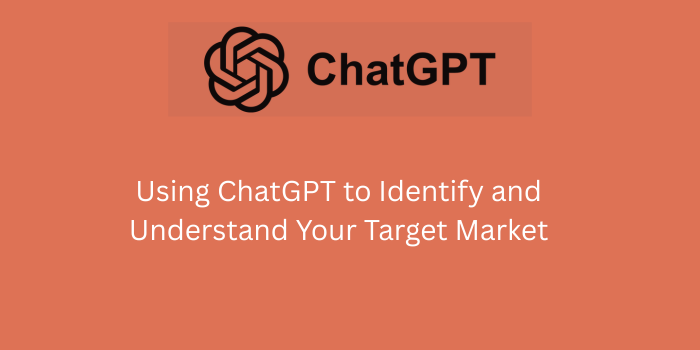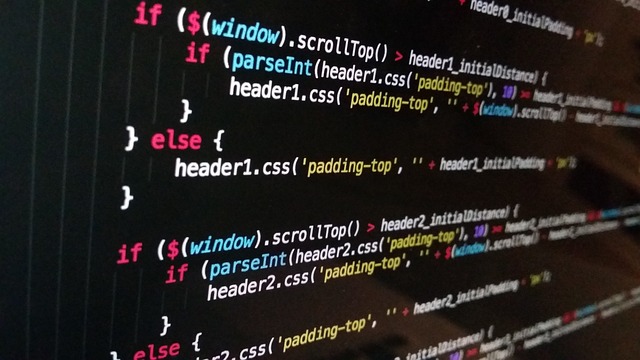Understanding your target market is the foundation of any successful marketing strategy. Whether you’re launching a product, crafting content, or building a brand, knowing exactly who you’re speaking to can make or break your results. But identifying your audience is not always straightforward—until now.
Thanks to AI tools like ChatGPT, entrepreneurs, marketers, and content creators can now leverage artificial intelligence to uncover deeper insights about their ideal customer base. In this post, we’ll explore how to use ChatGPT to identify and understand your target market—step-by-step.
Why Identifying Your Target Market Matters
Before we dive into using ChatGPT, it’s important to understand why target market analysis is so critical for any business or brand that wants to grow strategically. Identifying your target market allows you to focus your marketing efforts on the audience segments that are most likely to convert, engage, and become loyal customers. Without clear insights into your audience’s demographics, preferences, pain points, and behaviors, even the best products or services can struggle to find traction.
Conducting thorough target market analysis helps you create personalized content, launch more effective advertising campaigns, and position your brand in a way that truly resonates with your ideal customers.
By using tools like ChatGPT for market research and customer profiling, you can save time and gain a deeper understanding of your audience—giving you a competitive edge in today’s crowded digital landscape.
There are several key benefits of identifying your target audience as part of an effective marketing strategy. First, it enables better messaging by helping you tailor your tone, style, and value proposition to the right people—those who are most likely to resonate with your brand. Second, when your communication aligns with your audience’s specific needs and expectations, you can achieve higher conversion rates and build stronger connections. Third, precise audience targeting leads to more efficient ad spend, reducing wasted marketing budgets and improving return on investment. Lastly, clear knowledge of your ideal customers contributes to a better product-market fit, allowing you to create or refine offerings that meet real customer demands and solve genuine problems.
How ChatGPT Helps With Market Research
ChatGPT, as a language-based AI, is incredibly versatile for market research and audience analysis. It can assist you with:
- Creating customer personas
- Analyzing competitors’ audiences
- Segmenting your current user base
- Suggesting marketing angles
- Exploring industry-specific buyer behavior
The best part? It works in real-time, gives you structured responses, and saves hours of research.
Step-by-Step Guide: Using ChatGPT to Identify Your Target Market
Now that you understand the importance of target market research, let’s explore how you can use ChatGPT to streamline and enhance this process. ChatGPT isn’t just a chatbot—it’s a powerful AI assistant that can help you analyze customer segments, generate buyer personas, and uncover audience behaviors with just a few well-crafted prompts.
Whether you’re a digital marketer, entrepreneur, content creator, or small business owner, this step-by-step guide will show you exactly how to use ChatGPT for audience research and customer insights. By following these actionable steps, you’ll be able to define your target market more accurately and develop data-informed strategies that actually work.
1. Define Your Product or Service
Start by giving ChatGPT a clear overview of what you offer. Example prompt:
“I offer a monthly subscription box for dog owners that includes treats, toys, and grooming products. Who would be my ideal customer?”This prompt will generate a general customer persona. You can then refine further.
2. Ask for a Customer Persona
ChatGPT can create detailed personas including demographics, interests, goals, and challenges. Try:
“Can you create 3 detailed customer personas for my dog owner subscription box?”This helps you visualize your target audience more clearly.
3. Explore Demographics and Psychographics
Once you have personas, you can go deeper. Ask:
“What are the common demographics and psychographics of dog owners who subscribe to monthly boxes?”4. Use ChatGPT for Audience Segmentation
Segment your audience based on income, lifestyle, location, etc. Prompt example:
“Segment dog owners into 4 categories based on spending behavior.”5. Analyze Competitor Audiences
Use ChatGPT to look at what competitors are doing. Prompt idea:
“What kind of target audience does BarkBox focus on? Can I differentiate my brand?”6. Identify Pain Points
ChatGPT can generate a list of audience pain points related to your niche. Try:
“What are the biggest challenges dog owners face with pet product subscriptions?”7. Research Online Behavior
Get insights into where your audience hangs out. Ask:
“Where do dog owners spend time online? What forums, social media groups, or websites do they use?”8. Generate Survey or Interview Questions
If you’re conducting primary research, ChatGPT can help with that too. Ask:
“What are some good survey questions to better understand my audience of dog owners?”Bonus: ChatGPT Prompts to Understand Your Market Better
Here are some copy-paste prompts you can use right now:
- “What motivates [audience type] to buy [product type]?”
- “List 10 reasons why [audience] might not buy my product.”
- “What are current trends in [industry] that affect my customers?”
- “What values are most important to [audience]?”
- “How does [audience] typically research products before buying?”
Common Mistakes to Avoid
While ChatGPT is a powerful tool for audience research and customer insights, it’s not foolproof. Like any tool, its effectiveness depends on how you use it. Many businesses make the mistake of relying too heavily on AI without validating the information or tailoring the prompts for their unique needs. It’s essential to combine AI-generated insights with real-world data and human judgment to get the best results. By being aware of common pitfalls, you can use ChatGPT more effectively and ensure your market research is both accurate and actionable.
When using ChatGPT for target market research, avoid these pitfalls:
- Vague inputs: The more detail you give, the better the output.
- Relying solely on AI: Use ChatGPT to supplement—not replace—real-world validation.
- Ignoring segmentation: Your market is likely made up of several micro-audiences.
- Forgetting to test: Hypothesize with AI, but validate with surveys, interviews, and analytics.
Real-World Example
To fully understand how to use ChatGPT for target market research, it helps to see a practical example in action. Whether you’re a solopreneur, digital marketer, or small business owner, applying AI-driven insights can simplify and enhance your strategy. Let’s say you’ve built a product or service but aren’t quite sure how to define your ideal customer. ChatGPT can help you uncover audience traits, segment buyers, and fine-tune your messaging with surprising depth.
Here’s how a real-world use case might unfold using AI to identify and understand a niche market:
- Define product: “A mobile app that helps freelancers manage cash flow and taxes.”
- Ask for personas: ChatGPT identifies freelance writers, graphic designers, and consultants.
- Pain points: Late payments, inconsistent income, lack of tax knowledge.
- Online behavior: Reddit r/freelance, LinkedIn, Twitter.
This research could guide your content, ads, and even app features.
Conclusion: Make ChatGPT Your Target Market Research Assistant
Market research doesn’t have to be time-consuming or expensive. With ChatGPT, you can identify your target market, create detailed personas, and develop deeper insights in just a few prompts. The key is asking the right questions and refining your approach as you go.
If you’re ready to take your marketing to the next level, start experimenting with ChatGPT as your go-to assistant for audience research today.






